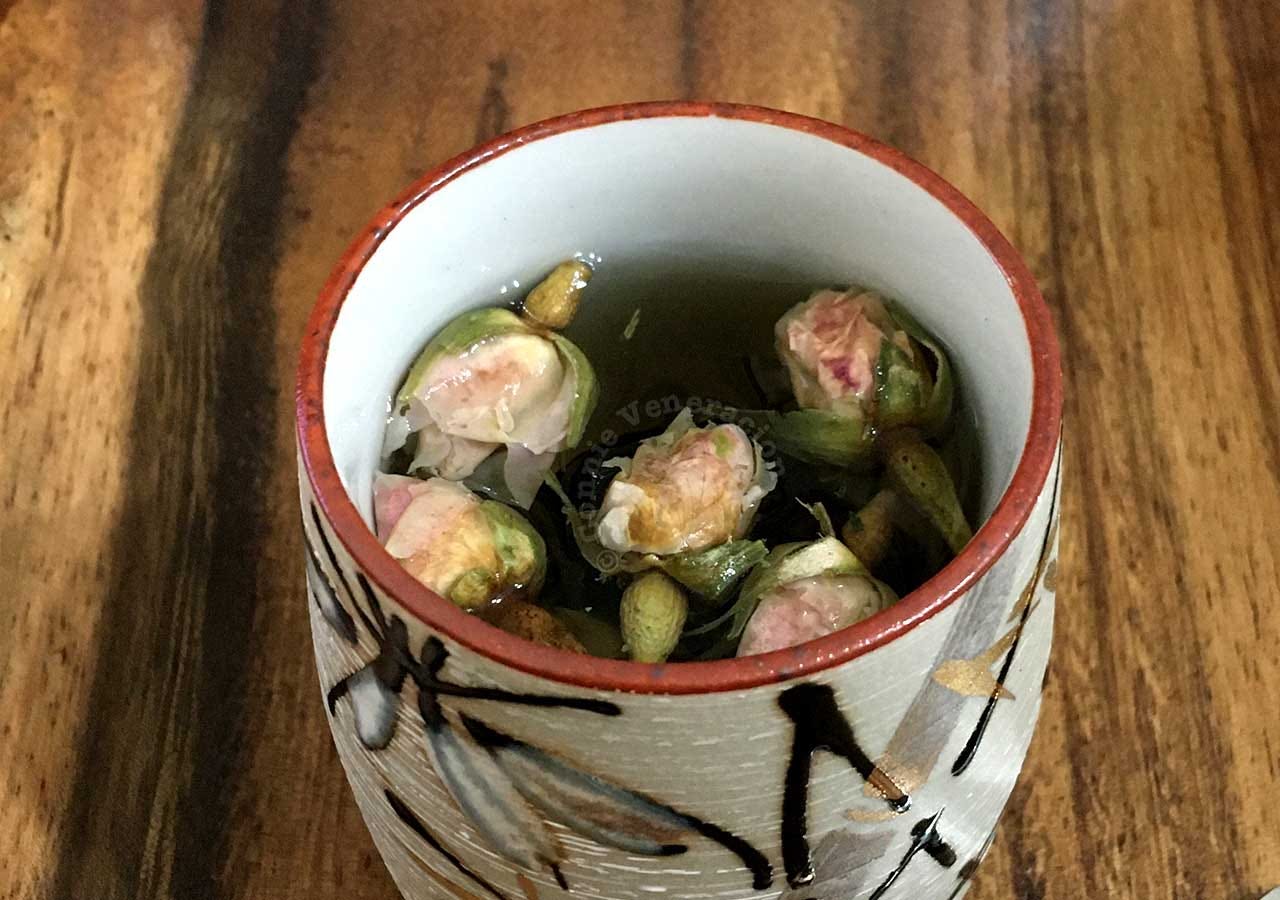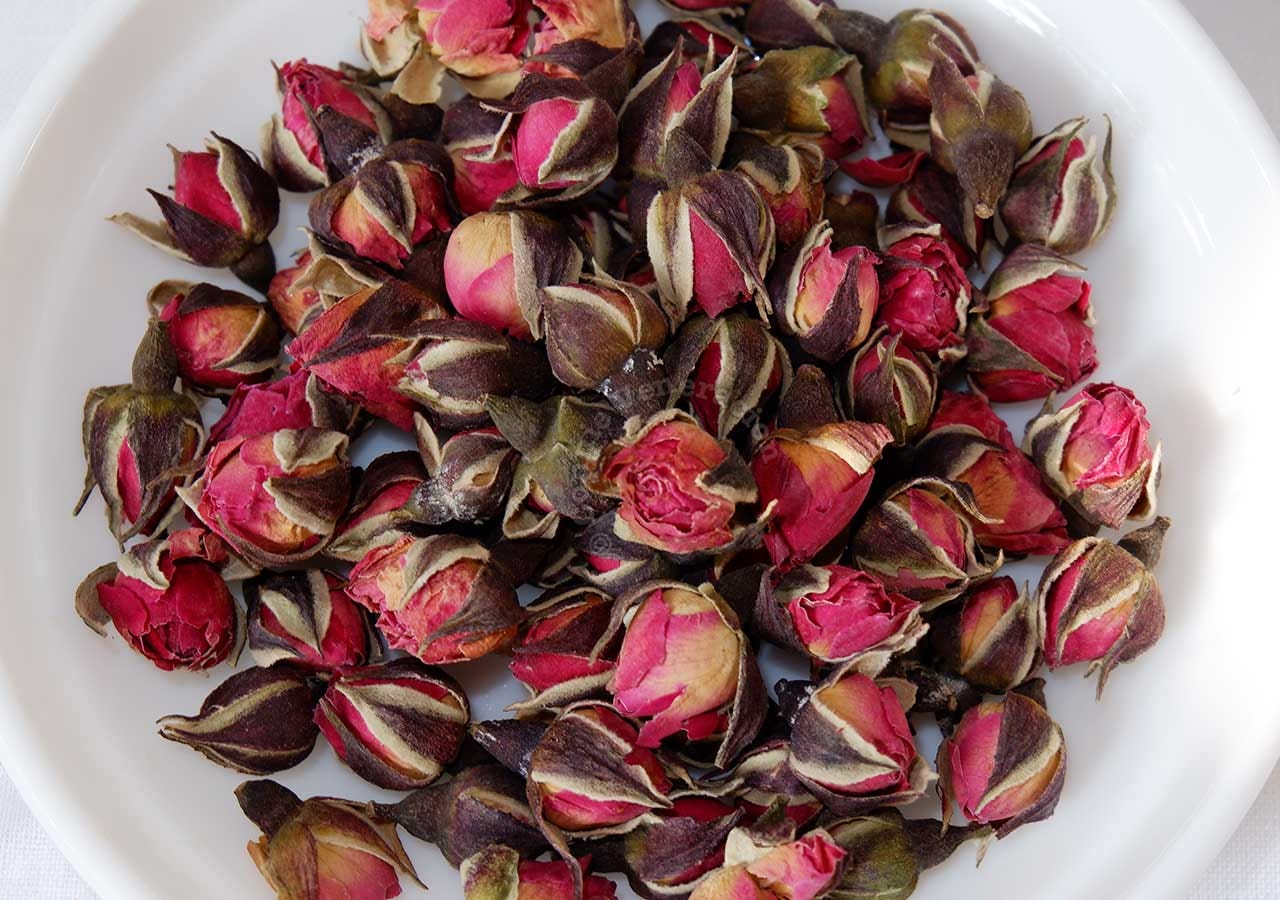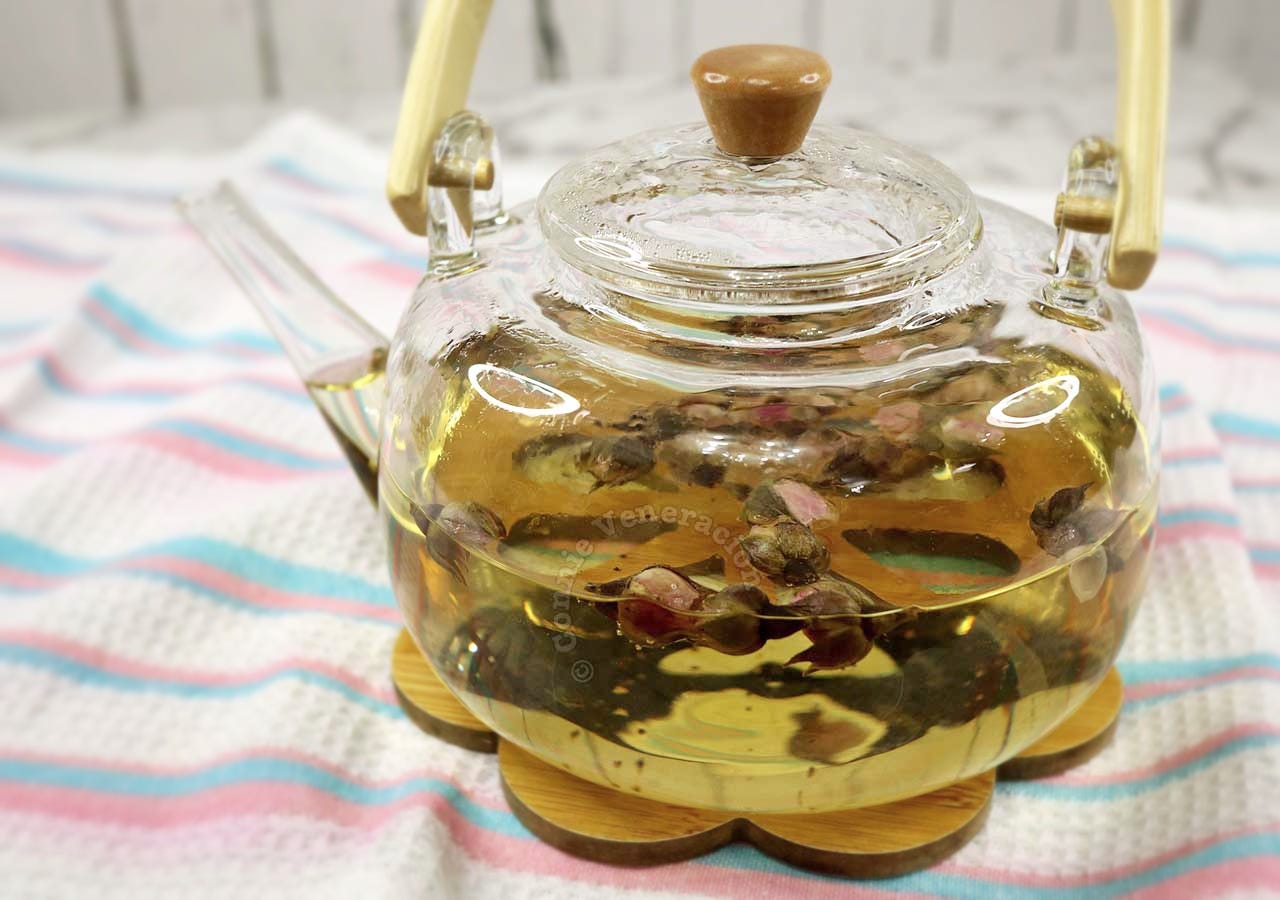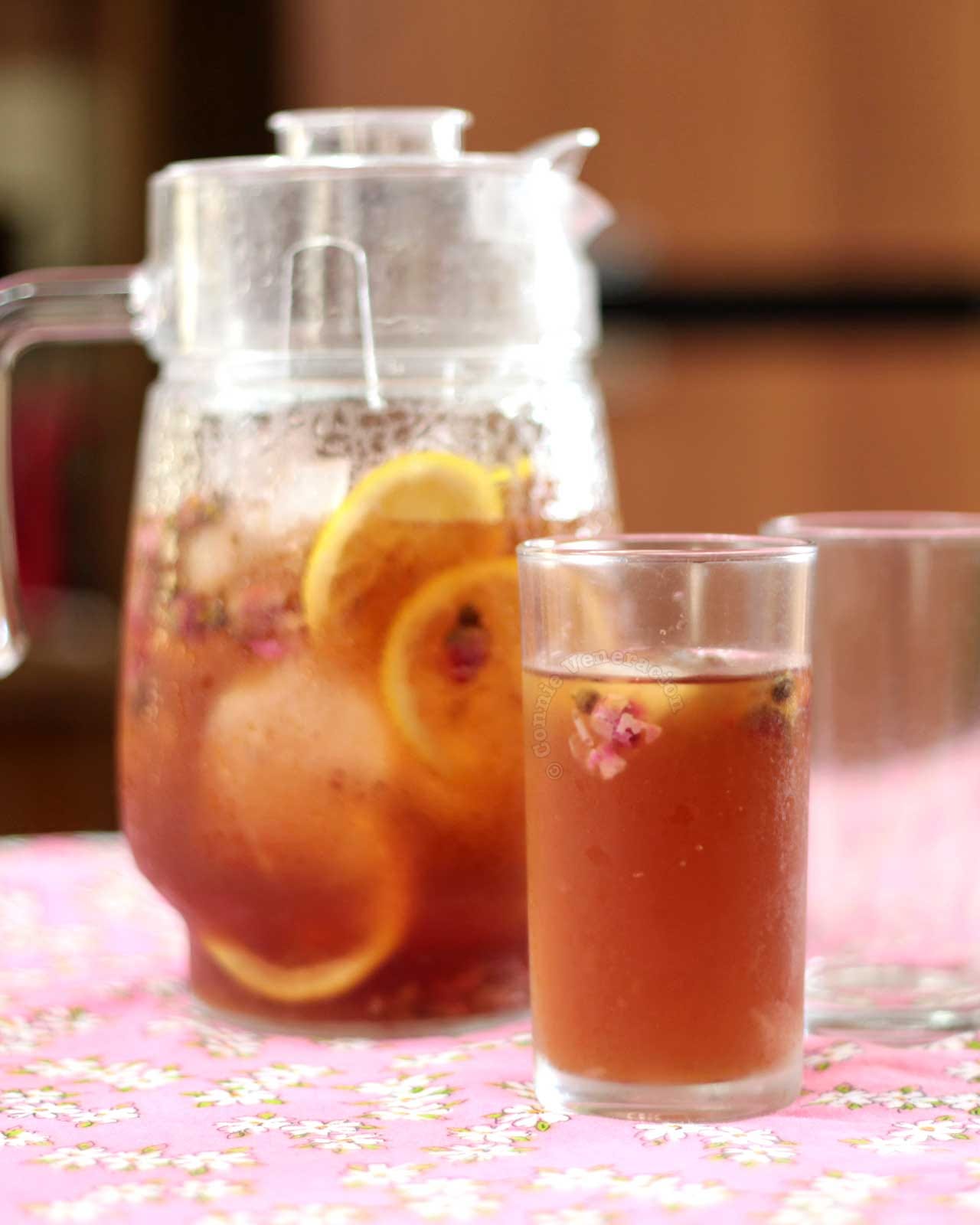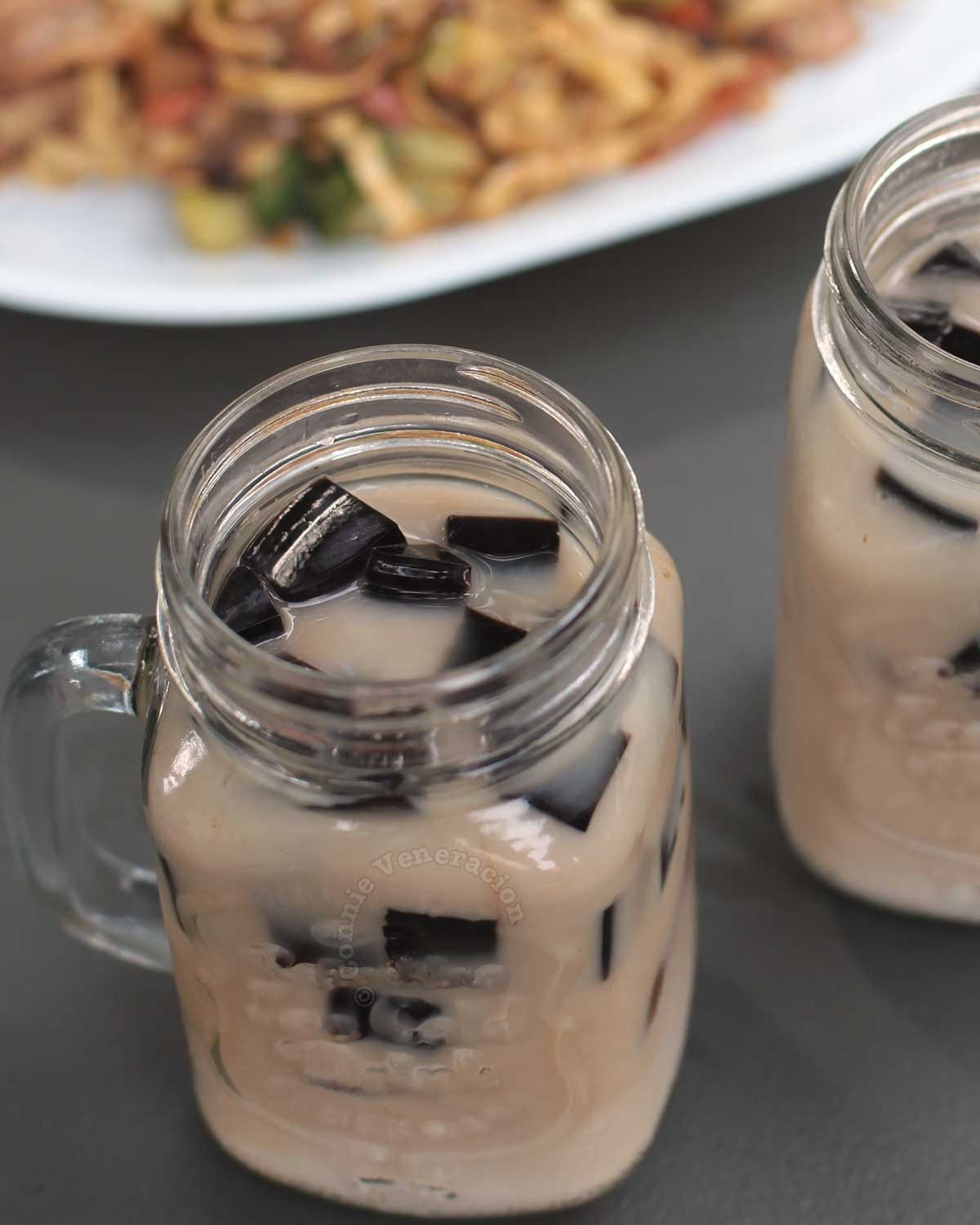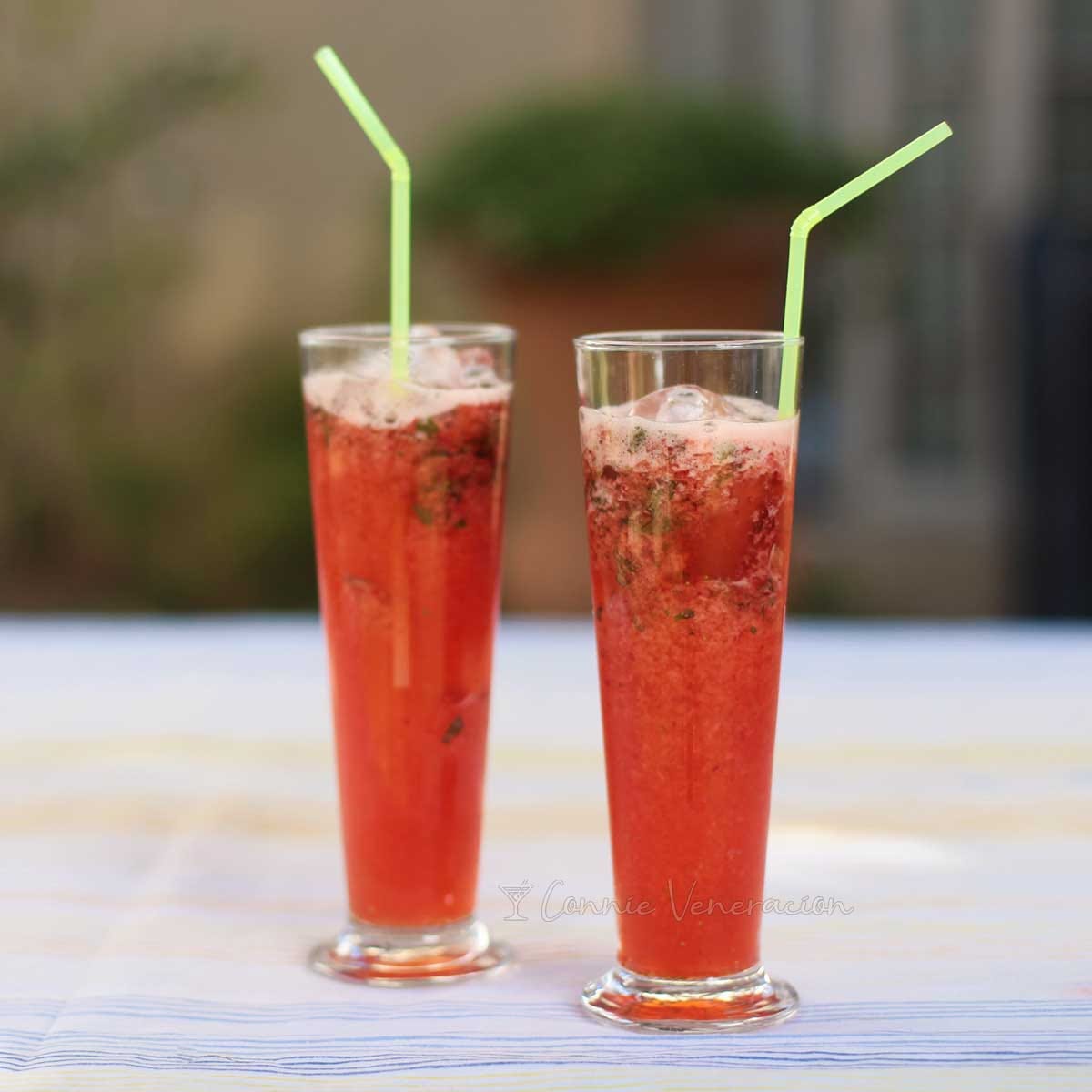#29 Iced rose "tea" is the perfect summer drink
An infusion made with dried flower buds, rose “tea” is a delightfully refreshing herbal brew with an unmistakable floral scent and flavor. It’s good hot or cold, and it’s caffeine-free.
Why is tea enclosed in quotation marks? Because an infusion made with rose buds is not tea. Tea is Camellia sinensis which this rose bud infusion contains none of. So, it’s an infusion. A tisane. Not real tea.
My first introduction to rose “tea” was via Kuala Lumpur over a decade ago where I visited a tea shop called Purple Cane in the Chinatown district. I bought several canisters of loose tea leaves and the small ones I gave away as gifts to friends last Christmas. One large canister went to my mother; another, to my brother. The last two large canisters, I kept. One contained green tea and the other one contained jasmine tea. Or so I thought.
When I opened the second canister, I was so surprised. No jasmine tea inside. Instead, whole dried rose buds. I double checked the label and, sure enough, it said Rose Tea. With a mixture of excitement and trepidation, I proceeded to brew the rose buds and made iced “tea”.
It turned out that the trepidation was uncalled for. The iced “tea” was wonderful. Light and sweet. The floral scent was unmistakable. And, unlike when using real tea leaves, there was no trace of bitterness even after the rose buds had been soaking in the pitcher for the duration of our meal which usually lasts for 30 minutes.
How to make hot rose “tea”
Making hot rose “tea” is essentially the same as making real tea. Drop dries rose buds into a cup or teapot, pour in hot water and leave to steep.
Unlike real tea leaves which turn bitter if allowed to steep for too long, a brew made with dried rose buds develops more flavor and a more pronounced floral scent if the flowers are allowed to steep longer. But steeping longer also means the allowing the hot drink to cool. So, steeping the flowers for longer than two to three minutes should be reserved for making the cold version of the drink.
How to make sweet iced rose “tea”
I let the buds steep for 30 minutes when making iced rose “tea”.
Dump the dried rose buds into a heatproof bowl. Pour in two cups of hot water. How hot? Okay, boil the water then turn off the heat and leave for five minutes. Then, pour the hot water over the rose buds. Cover the bowl loosely and leave to infuse for 30 minutes or until the liquid is cool.
Pour the infusion (optionally, you may strain it at this point) into a pitcher and add two cups of ice cubes. Add the lemon slices, if using, to the infusion and stir in as much honey as you like. Serve at once.
More summer drinks
Ice-cold hibiscus (roselle) juice - Inspired by a drink I first encountered at a Museum Cafe back in 2014, this iced cranberry-tasting drink is made by boiling and steeping calyces (sepals) of the roselle (Hibiscus sabdariffa) flower. Get the recipe.
Grass jelly milk tea - Stir cold milk and cooled brewed oolong tea, sweeten, pour over cubes of grass jelly and the drink is ready to serve. Get the recipe.
Watermelon iced tea - Brewed jasmine tea is cooled in a pitcher, pandan-infused sugar syrup is stirred in, ice is added and cubes of fresh watermelon are dropped in. Get the recipe.
Mango lassi - A cold drink from India made with pureed sweet ripe mangoes and yogurt, mango lassi gets its incomparable flavor from freshly ground cardamon. Perfect for hot summer days! Get the recipe.
Strawberry lemonade - Pureed strawberries, fresh lemon juice, bruised mint leaves for brightness and soda water for a bubbly finish. And the color… Oh, the lovely color! It's the perfect summer drink. Get the recipe.



